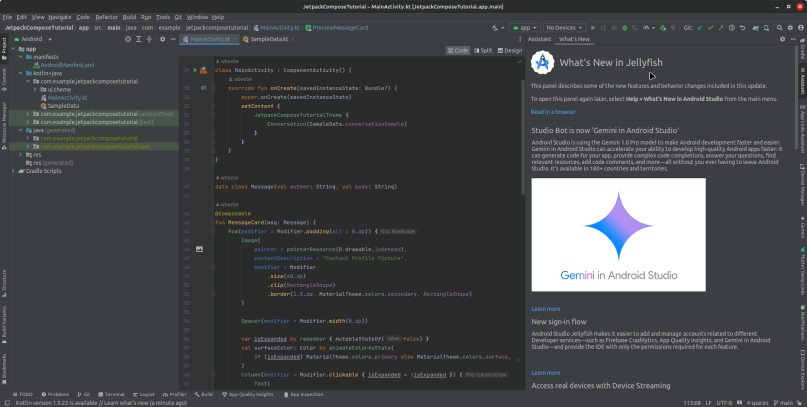
I will always put “AI” in quotes because every “AI” vendor is gaslighting us so hard about their machine learning software being “AI” when in reality it’s not. Google is no different, having recently announced both Gemini “AI” as well as Gemini coming to their Pixel line of smartphones. In order to invoke Gemini “AI”/machine learning you need to write Android applications that can invoke Gemini, and in order to invoke it you need support from your development tools such as Android Studio Jellyfish, which it proudly announced when first started up after Android Studio’s installation.
I have nothing that can remotely run Gemini because, according to news articles, the only Pixel phones that can handle it will be any Pixel 8 and soon-to-be-released Pixel 9 smartphone with at least 8GB of internal memory. I’m sure that it will also require reasonably up-to-date processors running on the phone as well. But if you want to get involved with Google Gemini running on a Pixel 8 or later that can support it, Android Studio Jellyfish is your on-ramp to this exciting future.

It would seem that the main purpose of new software is to sell new hardware. Personally I’m skeptical that my ‘old’ browser will no longer display the radar weather map because that message appears on the site not as an error on my machine. One wonders just how much of the lack of backward compatibility is due to software examining hardware and finding it fails to meet what is really an arbitrary threshold.
LikeLiked by 1 person
It’s complicated. To do any machine learning efficiently (i.e. quickly), then your computer needs a dedicated processor, in this case an NPU (neural processing unit). We’ve been through this before with math coprocessors, then GPUs, and other lessor known additional processors. My two Apple Silicon MacBook Pros have the NPU built into the SoC, so they should be able to handle what Apple is supposed to deliver later this year. Apple calls their NPU a neural engine, and they’ve been adding them to their processors starting with the A11 in 2017. This was when the iPhone 8 was released, and was the start of Apple’s march towards fast computational photography.
On the other hand, there’s Microsoft and Windows 11, which decided to arbitrarily not install on any system that wouldn’t support a hardware TPU as well as specific Intel CPU instructions:
That may be the last straw with a lot of folks. Add in Microsoft’s forced advertising on Windows 11, as well as dropping features that many Windows 10 users expect, and it would appear that Windows 10 usage went up to 70% while Windows 11 dropped nearly 1%.
I personally don’t run Windows on any of my home systems, preferring Linux, then macOS. I especially prefer Linux becauseI have a 14-year-old Samsung notebook and an 11-year-old Samsung notebook, both of which came with Windows but now run the latest Linux distributions (the 14-year-old runs Fedora, while the 11-year-old runs Linux Mint).
LikeLiked by 1 person